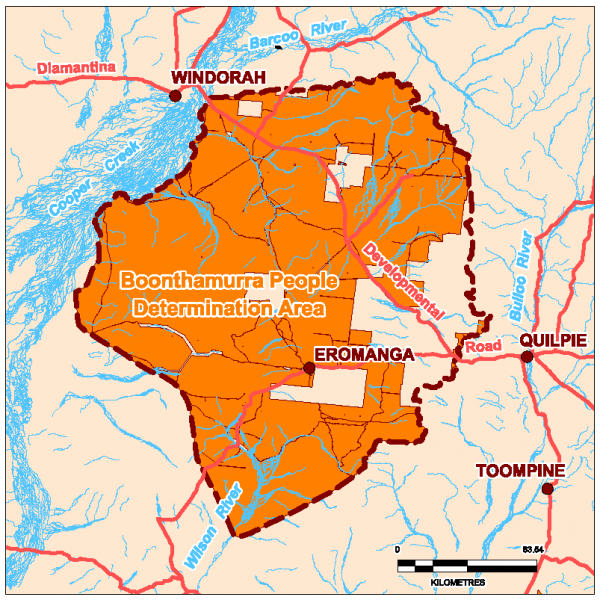Boonthamurra Native Title Determination
Native title is a form of land rights that recognises Aboriginal Australian’s ongoing connection to Country, and our right to access our country to maintain this connection. To gain recognition of our native title rights and interests, the Boonthamurra People embarked on a nine-year journey through the Australian Federal Court, presenting physical, oral and written evidence of our continuing culture and connection to Country.
On 25 June, 2015, the Boonthamurra People’s native title rights and interests were formally recognized in a consent determination made by the Federal Court. The determination of non-exclusive native title covered an area of more than 23 400 square kilometres of land and waters in the Channel country of South West Queensland, within the Quilpie, Barcoo, and Bulloo shires, and encompassing the town of Eromanga, and various pastoral stations.

First lodged in 2006, our native title journey highlighted the unbroken connection of Boonthamurra People to our traditional country, first documented by pastoralists in the 1860s, and surviving against all the odds of colonization and the frontier violence and forced removals this involved.

